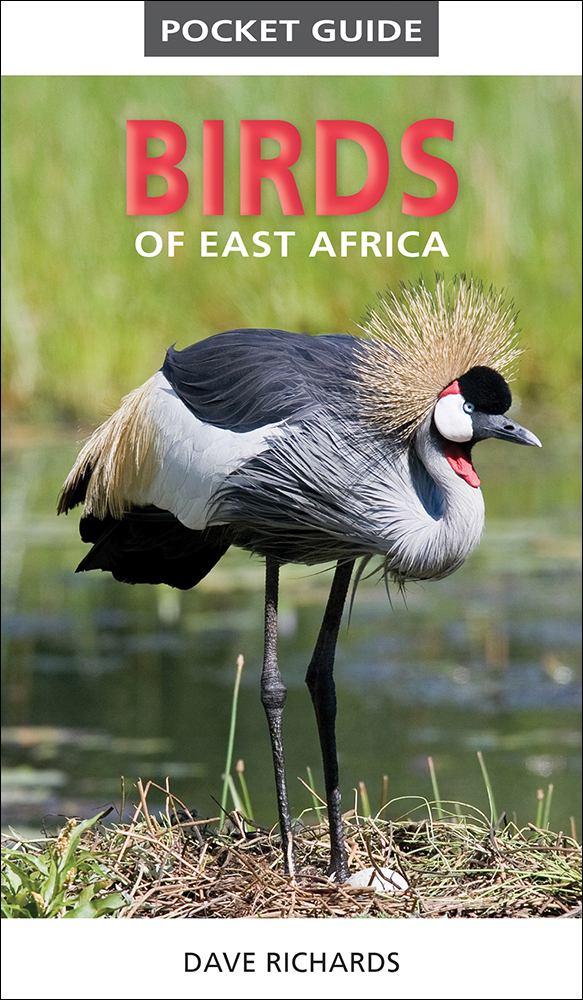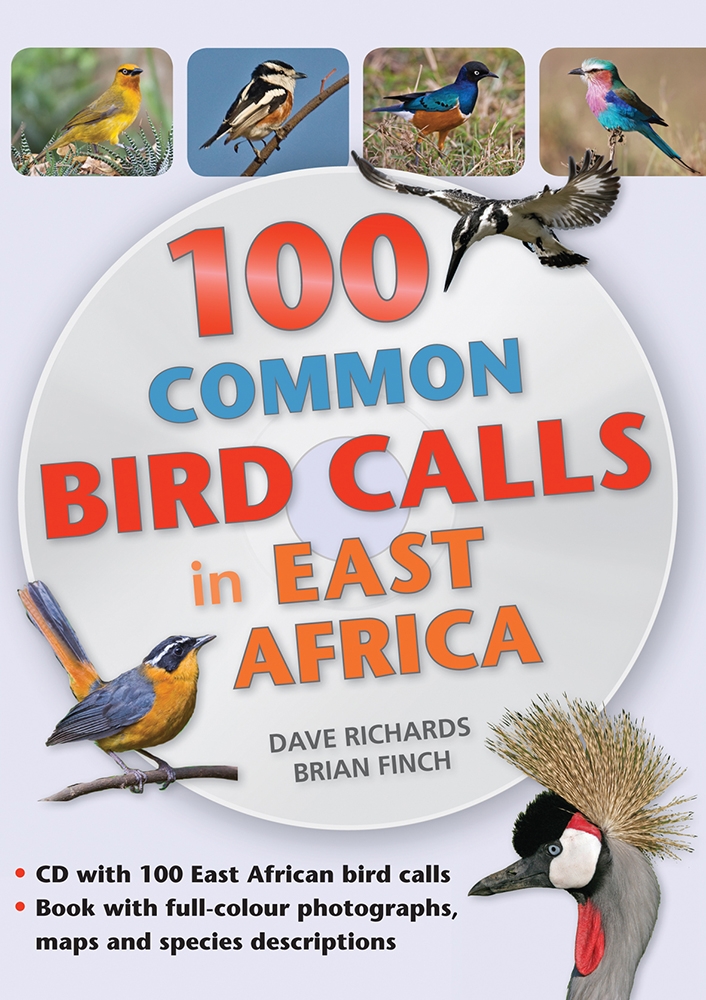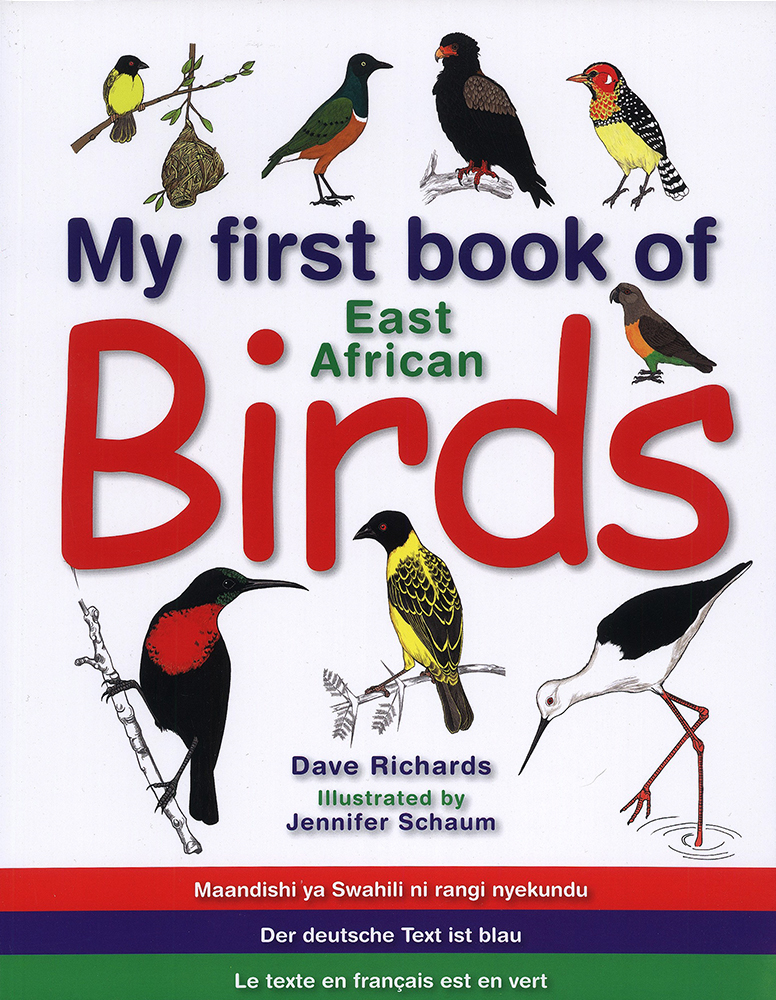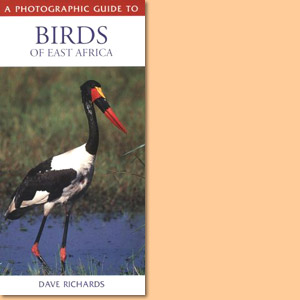Birds of East Africa (Pocket Guide), by Dave Richards
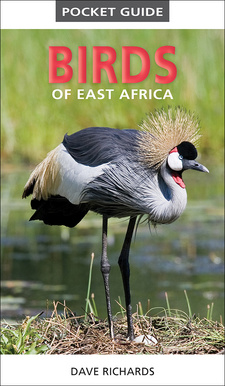
Birds of East Africa (Pocket Guide), by Dave Richards: Penguin Random House South Africa (Struik Nature): Cape Town, South Africa 2016: ISBN 9781775843610 / ISBN 978-1-77584-361-0
Bird-watching, or birding as it is often called, is an absorbing pastime, ever increasing in popularity. East Africa is renowned for its wealth of wildlife and for the huge diversity of habitats, which range from snow-covered mountain peaks and forests to deserts and beautiful golden beaches. Pocket Guide to Birds of East Africa by Dave Richards features 296 birds likely to be spotted in the region.
Few visitors to the region will fail to be impressed by the large variety of colourful birds they see and by their relative tameness. At least 1,400 species have been recorded, representing approximately 15% of the world's total. This figure changes each year as new bird species are discovered, particularly in Tanzania. Recent discoveries include a sunbird, a weaver, a cisticola and a forest partridge whose closest relative is the hill partridge of Asia. But even though the number of species is slowly increasing, we cannot afford to be complacent; the destruction of habitat, due largely to an ever-increasing human population, has placed a number of bird species in danger. The forests of Kakamega, Nandi, Sokoke, Uluguru and Usambara are all vulnerable. Many birds are threatened, including the Crowned Crane - Uganda's national bird - at risk because of the draining of its swamp habitat and also because of the trade in wild exotic birds. This book presents 296 of the approximately 1,400 species found in East Africa. Selecting birds for inclusion in this guide was a particularly difficult task, and preference was given to those species that are easily seen and to those that occur in areas visited by tourists. This explains why the Long-tailed Widowbird and the Rufous-tailed Weaver are included. Even though the Long-tailed Widowbird occurs in only a relatively small area, during the breeding season it becomes very obvious to visitors to Lake Nakuru National Park and to those driving between Mount Kenya and the Aberdares, or to Samburu and Buffalo Springs national reserves. Similarly, visitors to Ngorongoro Crater and the Serengeti National Park cannot fail to see the highly gregarious and noisy Rufous-tailed Weaver, which, until recently, occurred only in Tanzania. There is now a small breeding population in the Maasai Mara-National Reserve, Kenya. Most of the birds likely to be seen by visitors to Uganda have been included in this guide. After years of turmoil in Uganda in the 1970s, it has become far more stable and friendly, and birders are again visiting that country, although in smaller numbers compared to those entering Kenya and Tanzania. Although a number of birds can be seen at close range in the vicinity of safari lodges and hotels, many are furtive or not readily seen in this context. Because of this, a pair of binoculars is a must when watching birds. The most popular sizes for bird-watching are 7 x 35 or 8 x 40, both of which are generally small in size and reasonably light in weight. The first number (7/8) represents the magnification, and the second (35/40) refers to the diameter of the front lens in millimetres. Generally, the larger the diameter of the front lens in relation to the size of the eyepiece lens, the greater the amount of light gathered and, therefore, the brighter and clearer the image. Really keen birders often use a 10 x 40 or 10 x 50 combination, but these tend to be heavy and cumbersome, and are difficult to hold steady. Telescopes are becoming increasingly popular in bird-watching, and if you can cope with the inconvenience of carrying one, are useful when identifying distant or very small birds. Always take a notepad and pencil on any bird-watching expedition: there are certain to be birds you do not recognise, and usually there is not time to page through field guides in an attempt to identify a species. When you do come upon an unknown species, take note of the following features, which will serve as a guide to identify the bird at a later time: [...]
This is an excerpt from Birds of East Africa (Pocket Guide), by Dave Richards.
Title: Birds of East Africa
Series: Pocket Guide
Author: Dave Richards
Publisher: Penguin Random House South Africa (Struik Nature)
Cape Town, South Africa 2016
ISBN 9781775843610 / ISBN 978-1-77584-361-0
Softcover, 11 x 18 cm, 160 pages, 400 colour photographs
Richards, Dave im Namibiana-Buchangebot
Birds of East Africa (Pocket Guide)
The Pocket Guide to Birds of East Africa features 296 birds likely to be spotted in the region.
100 Common Bird Calls in East Africa
100 Common Bird Calls in East Africa will help identify the sounds made by a range of the most common and widely distributed East African bird species.
My first book of East African birds
My First Book of East African Birds introduces young readers to the birds most commonly seen in gardens and wildlife areas.
Wildlife of East Africa
This is an all-in-one photographic guide to East Africa's most conspicuous and interesting mammals, birds, reptiles, frogs, insects, trees and flowers.
A Photographic Guide to Birds of East Africa
A photographic guide to birds of East Africa is made in a user-friendly format with 350 photographs illustrating each of the 265 species.

